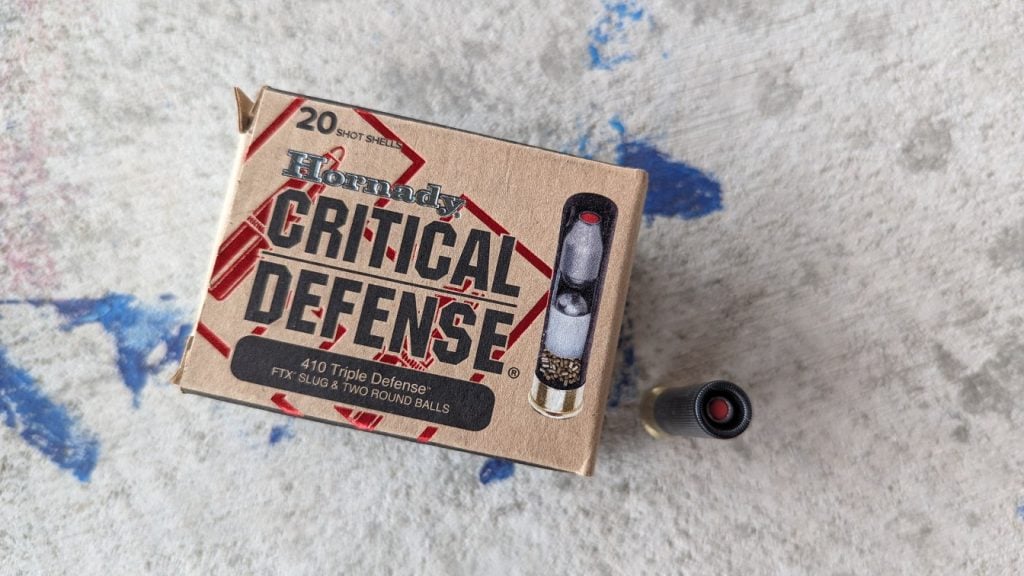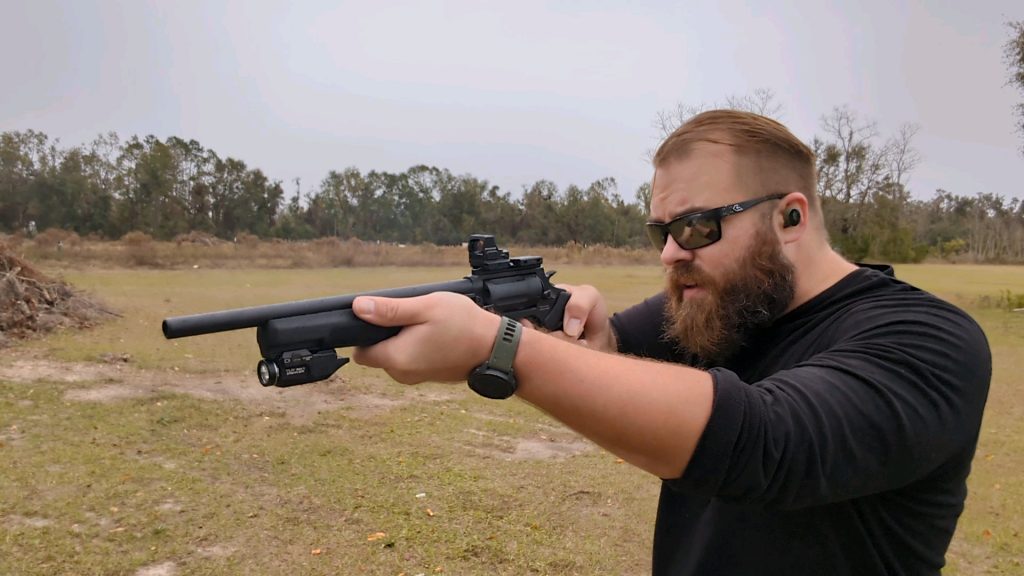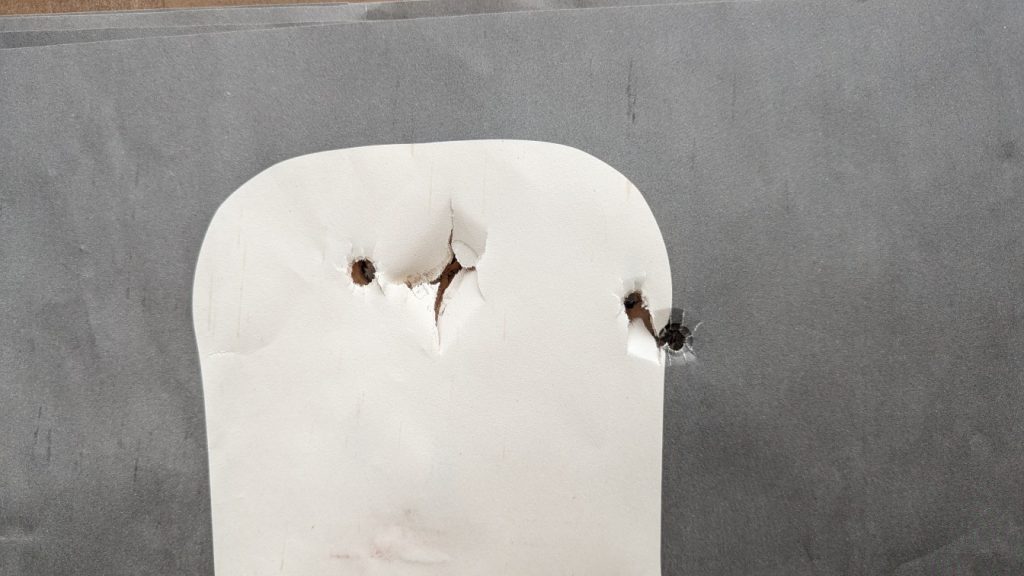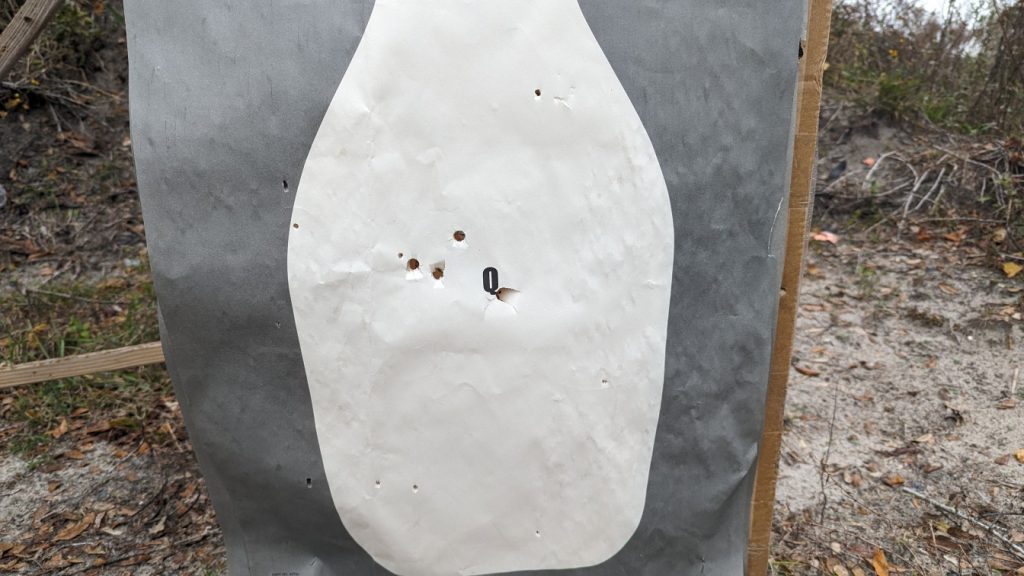I was never a fan of the Judge or Governor. I wrote an entire article about why .410 revolvers are silly guns for self-defense. Then Taurus released the Judge Home Defender. The Judge Home Defender extended the barrel to 13 inches and turned a silly revolver into something more akin to a Shockwave. It’s a weapon that can be used with one hand, holds five rounds, and is optic and light-ready.
A gun is only as good as its ammo, and if you’re using a .410 revolver, then you might want to look into specialized .410 shells. The Judge’s impact on the .410 world was felt. It created several different specialized loads for the .410 aimed at the Judge. While the Judge might not have been up to par with a 3-inch barrel, a 13-inch adds some sting to the .410 shotshell. Sadly, rounds like Federal’s handgun buckshot are gone, as is the really awesome Remington Ultimate Defense .410.
That leaves us with the Hornady Critical Defense .410 and the Winchester PDX1 Elite .410.
Winchester Elite PDX1 .410
There are two loads for the PDX1 that correspond to the .410 shotgun chamber size. We have both 2.5 and 3-inch varieties. Today’s testing will utilize the 2.5-inch version. The 3-inch version might be out of production or hard to find. Both rounds use a series of disks instead of pellets. The disks are big enough to engage the rifling and travel with excellent accuracy. The 3-inch version has four disks, and the 2.5-inch version has three disks.

Winchester’s PDX1 loadings got really into this odd buck and ball theme for a while. Their twelve gauge slugs have three pellets of buckshot behind them. The PDX1 loads pack either 12 or 16 BBs, depending on shell length. When I say BB, I’m referring to the shot size commonly used for large birds.
The Winchester PDX1 load certainly promises an interesting and dynamic option for home and self-defense. The stated velocity is 750 feet per second, but that’s measured from a 3-inch Judge barrel. Going 13-inches will certainly boost those numbers.
Hornady Critical Defense .410
Speaking of buck and ball, the Hornady Critical Defense .410 is basically just that, but with a practical design. At its core, the Critical Defense load utilizes a .41 caliber FTX slug backed by two .35 caliber balls. It only comes in a 2.5-inch variety. While the .41 caliber slug is different, this load is really best thought of as a buckshot round and not for 100-yard slug use.

The 410 Triple Defense design’s slug does offer the potential for expansion., which makes it more akin to a traditional handgun round. Expansion is nice, and hitting something with two extra .35 caliber balls is also quite nice. The Triple Defense has a stated velocity of 750 feet per second, but again, that’s measured through the barrel of the 3-inch Judge.
Penetration Testing
I don’t have any ballistic gel to test individually, and while one test is great, I looked through a wide variety of published tests from around the internet to determine penetration and performance.
I didn’t have to go far. Our own Terril Hebert tested the Hornady Defense and found velocities of 1,240 FPS from an 18.5-inch barrel. He fired two rounds and observed the slugs penetrating ballistic gel 10 to 12 inches, but one of the buckshot pellets made it to 24 inches! That’s a big difference. The slugs also flattened instead of expanding, likely limiting their penetration compared to the round ball.

The Firearmblog posted a test of the PDX1 .410 rounds fired from a Judge at ballistic gel. The plate-like projectiles penetrated as deep as 13.75 inches, and the BBs penetrated between eight and 14 inches. Other testing I found online showed similar performance, with the deepest penetration being 15 inches.
The PDX1’s plates penetrate more consistently than the FTX slug’s, but the buckshot of the Critical Defense load penetrates more than adequately. Both rounds certainly meet minimum standards for penetration and depth.
To the Range
One tricky thing with the .410 and the Judge is the shell size. Sure, they are all .410 shells, but some .410 shells are wider than others. Some also expand a bit wider. This makes loading and unloading difficult. For example, with Fioochi’s birdshot, I have to use a punch to get the shells out of a judge. Luckily, the Hornady and Winchester rounds slide right in and right out; even after they’ve been fired, there are no issues.

One of the first things I noticed was the recoil difference between the two rounds. The Winchester PDX1 load has stiffer recoil than the Hornady Critical Defense. It’s not a magnum handgun by any means, but there is a noticeable difference. Also, with the Judge Home Defender, there is a noticeable difference in blasting out the side of the gun.
My Home Defender has a red dot sight zeroed for .45 Colt rounds. Luckily, that zero translated well to 15 yards. Both rounds hit consistently in the same area for three rounds each. This created nice big holes that shredded my paper targets.

I ran a few ready drills, namely a two-shot ready drill. At the beep of my shot timer, I aimed and fired two rounds accurately as fast as possible. With the Hornady Critical Defense, I landed both rounds in 1.89 seconds into the chest of the target. With the Winchester PDX1 load, I landed both rounds in 2.01 seconds. The slight difference in recoil made a difference.
Patterning The Loads
I swapped targets and reloaded the Home Defender. I set up at ten yards and fired one round each. My intention was to pattern each load to illustrate their performance. The Hornady Critical Defense load patterned quite well at ten yards. The slug hit dead on my point of aim, and the two buckshot rounds patterned right next to each other a couple of inches away from the slug.

The PDX1 load patterned…uhm, well, interestingly. The plates are stacked right on top of each other. That’s a solid, excellent pattern that would likely do some serious damage. The BBs, however, they went everywhere! They covered the entire FBI Q Target from top to bottom.

This is problematic. If it patterns this wildly at ten yards, then I wouldn’t want to try to shoot a threat even at ten yards. Those pellets are a risk and a danger to people outside of the threat. You are responsible for every shot fired, and those pellets count. That would make me very nervous to use this round for defensive purposes.
Special Loads For Special Guns
Do you need a special load for the Home Defender? I don’t quite think it’s necessary. At-home defense ranges the Judge Home Defender patterns a lot better than the Shorty Judge. However, there is a noticeable difference in performance with these specialized rounds. They tend to pattern a bit tighter than the standard buckshot rounds and offer deeper penetration on top of that. These specialized loads give you an interesting option for home defense use and make the most of the Judeg Home Defender’s rifled barrel.
Which is better? I like the PDX1 but feel the BBs are a serious downside. They covered a massive target from top to bottom, and I don’t like the lack of accountability the BBs create. If Winchester created a PDX1 Elite with disks only, they’d have a better round. For that reason, I’m liable to stick with my Critical Defense loads.

